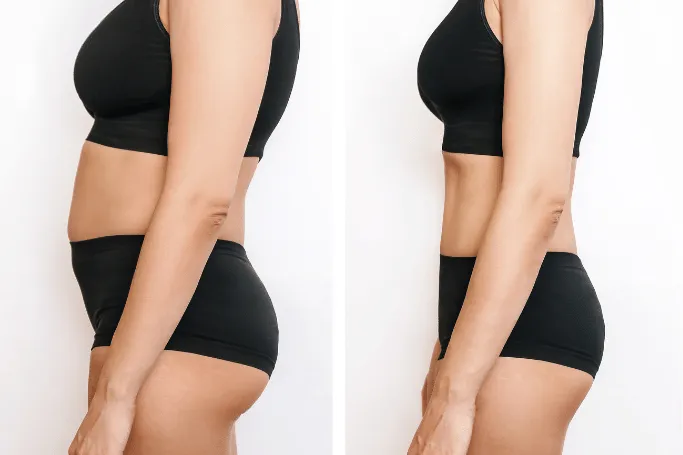6 Strange Effects Swimming Has on Your Body

If you intend to start swimming regularly, anticipate whole-body advantages.
For instance, a study that appeared in the 2016 issue of BioMedical Engineering Online demonstrated that eight weeks of moderate-intensity swimming had positive effects on systolic blood pressure, arterial stiffness, and body-fat percentage, all of which are markers of the risk of developing heart disease.
For the health of your joints, swim. The stiffness and joint discomfort experienced by older persons with osteoarthritis were significantly reduced by swimming for 45 minutes three days a week for 12 weeks, according to a 2016 study published in The Journal of Rheumatology. Physical limits of the study participants significantly improved as well.
However, swimming can also cause unusual physical changes, such as wrinkled fingers and toes and green hair (if you swim in a chlorinated pool). Which of these swimming-related issues need your attention? What's more, how can you solve or prevent them?
To find out everything, keep reading.
1. Hair Issues
Swimming can damage hair in a variety of ways.
For instance, if you have light-colored hair, you might notice that after swimming in a chlorinated pool (usually if you've been in the water for several days in a row), your strands take on a greenish tinge.
According to American Trey Taylor, it's a rather typical occurrence. Coach for the Gaston Gators Masters program in Gastonia, North Carolina, who is qualified in Masters Swimming.
According to the Water Quality and Health Council, it can occur if copper buildup exists in your pool as a result of copper-containing pool mineral ionizers used to treat the water. Copper oxidizes and bonds to the proteins in hair strands when it is in contact with water and chlorine. Regardless of hair color, the reaction takes place, but only lighter hair colors show the greening effect.
According to the Centers for Disease Control and Prevention, chlorine is used in swimming pools to destroy dangerous bacteria, but it also has bleaching capabilities, so you can notice that your hair seems lighter after swimming, regardless of the color.
What to Do: Take a brisk rinse in the shower as soon as you exit the water. Your chances of noticing alterations increase with the amount of time the chemicals remain on your strands. Additionally, Taylor claims that sitting in the sun will intensify the bleaching effects of chlorine.
Wear a swim cap when swimming for exercise. It will shield your hair from the pool chemicals and keep it out of your face. While some people favor Lycra caps, others find silicone caps to be more pleasant. Unlike silicone swim caps, which feel tight on the head, they are constructed of a soft mesh material, according to Taylor.
2. Skin that smells of chlorine
Swimmers frequently lament how the fragrance of the water lingers on them for days. Some people may smell it while they sweat, while others are struck with it as soon as they enter the shower.
For this, you can thank chlorine.
Chlorine emits a unique smell when it comes into contact with water. When the chlorine and water mixture reacts with any bacteria, viruses, or other microbes that may also be present in the pool, the stink becomes much stronger.
According to board-certified dermatologist Lauren Ploch, MD, of Augusta, Georgia, the lipids (fats) in our skin are drawn to the molecules created by chemical reactions involving chlorine, water, and pathogens. Those molecules remain in your pores until your perspiration releases them. It's the reason the fragrance could remain, adds Dr. Ploch.
What to Do About It Because pool chemicals are potent, it can be difficult to completely prevent having that lasting smell on your skin. However, Ploch advises that reducing the amount of time you spend in the pool can assist to lessen the stench. When you leave or whenever you take a break, wash up at the showers by the pool (washing your skin with a gentle cleanser if you can).
3. Swimmer’s Knee
According to Libby Bergman, DPT, an orthopedic clinical specialist and clinical director at CityPT in St. Augustine, Florida, "swimming has a great reputation for being easy on the joints while improving full body strength and unequaled aerobic capacity." She claims to be an avid triathlete herself, yet overuse injuries can happen with any exercise requiring repetitive motion.
According to study, activities like swimming might irritate the interior of the knees. The condition, often known as swimmer's knee, frequently affects breaststroke swimmers.
According to Bergman, doing the breaststroke involves substantial turnout (external rotation) at the hip joint. When you complete the kick, extra pressure is placed on the inside of the knee because the femur, the upper leg bone, can only spin so far outward. That could push the ligaments in your knee past their breaking point. Research indicates that other strokes can also cause it, although breaststroke is the most frequent link.
You probably won't experience this problem if you swim a moderate amount and vary your strokes (unless you have limited hip mobility to begin with or another existing injury). According to Bergman, it occurs more frequently in competitive athletes who follow more rigorous training regimens (especially those who concentrate on the breaststroke) and on occasion in athletes who start training later in life.
What to Do: According to Bergman, strengthening your glute muscles (the gluteus maximus, medius, and minimus) can increase the hips' ability to rotate and help reduce your likelihood of developing this issue. Additionally, the gemelli, obturators, and quadratus femoris, which function as the deep hip rotator cuff muscles, can be strengthened. Clamshells and banded glute bridge abductions, in which the knees are driven outward at the top of the movement while doing a glute bridge with a tiny band above them, are two exercises that can assist strengthen those muscles.
Try a different stroke throughout your subsequent exercises if you have knee pain while swimming or just after. Give yourself at least a couple of days to recover from the stroke that caused the knee pain. Bergman advises seeking a physical therapist's assessment if the discomfort reappears because trying to swim through it would just make matters worse.
4. Overheating
You are probably aware of the dangers associated with swimming in (or spending time in) water that is too cold when the surrounding air is also too cold.
However, because your body cannot cool itself when it becomes too hot, warmer water can also be hazardous. According to U.S., it is more crucial to make sure that you are swimming in water that is the appropriate temperature the harder the activity. swimming for masters.
You run the risk of overheating, often referred to as hyperthermia, when your body temperature rises too high. Heat cramps, heat fatigue, heat rash, heat stress, and heatstroke are all potential issues. According to Cleveland Clinic, less severe types of hyperthermia, like heat cramps and heat rash, can develop into more serious and potentially fatal conditions, like heat exhaustion and heatstroke.
What to Do According to the Mayo Clinic, the ideal pool temperature for exercise is between 83 and 88 degrees F, although pools used for physical treatment are often warmer. In general, outdoor pools are more likely to overheat than indoor ones (especially those built for lap swimming), especially on days that are very warm and sunny.
Pay attention to how you feel throughout your workout if you're unsure about the pool's temperature (or even if you know the water is the proper temperature). Take a pause if you or a swimming partner see redness on your face, chest, or upper back, or if you get cramps. Likewise, take a break if you start to feel tired, thirsty, or detect a headache coming on. Leave the pool, grab a beverage, and take a refreshing shower.
According to Taylor, some outdoor swimming pools include cooling stations with misting fans that you may stand in front of.
When and if you're ready, jump back into the water.
5. Raisin Fingers and Toes
If you've been swimming for a while, you've probably noticed that your fingers and toes start to wrinkle a little (like a raisin). And the wrinkles become more obvious the longer you stay.
According to Ploch, scientists are unsure of the exact cause of the phenomenon. "For decades, we thought it was purely osmosis," or the passage of water molecules through a porous membrane.
According to Nemours KidsHealth, sebum, an oil that coats the skin, softens, lubricates, and somewhat waterproofs it. However, spending a lot of time in water removes the oil, resulting in soggy skin.
Your fingers and toes wrinkle though, not swell. According to study, even though the mechanism isn't entirely known, experts think that it's a response by the autonomic nervous system—the portion of the nervous system that controls automatic activities like breathing and heart rate—to assist us grip moist objects.
What to Do Don't stress over having raisins for fingers and toes. According to Nemours, the wrinkles will disappear swiftly, and your skin will refill its sebum.
6. Swimmer’s Ear
You run the danger of getting sick whenever you share water with others. According to Paul Auwaerter, MD, a professor of medicine and clinical director of the Division of Infectious Diseases at the Johns Hopkins University School of Medicine in Baltimore, you could potentially contract an unpleasant diarrheal illness (like norovirus or giardia) if the pool's pH and chlorine levels aren't maintained or if there's overcrowding.
Dr. Auwaerter continues, "Properly managed pools should represent a small danger of infections."
Even in pools that are well-maintained, it is possible for swimmer's ear, a painful ailment caused by germs that fester in pool water that has been left in your ear for a long time.
According to the Mayo Clinic, swimmer's ear symptoms are often moderate at first and include mild discomfort that gets worse if you pull on your outer ear or push on the small "bump" in front of your ear. Other symptoms can include outflow of clear fluid and mild itching in your ear canal.
What to Do: Call your doctor if you experience any swimmer's ear symptoms, advises Mayo Clinic. The infection will usually be treated by your doctor cleaning your outer ear canal and prescribing eardrops; if left untreated, symptoms may increase or, in more serious situations, become permanent.
Make sure to dry your ears after being in the water to avoid swimmer's ear. Make sure to simply clean your outer ear with a soft towel while you tilt your head to either side to aid in water drainage from the ear canal. The delicate skin lining your ear canal can be damaged by sticking your fingers or cotton swabs there, which can raise your chance of developing swimmer's ear.
Related Posts




